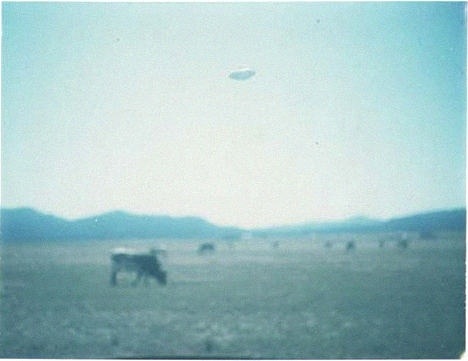
“In February 1960 the US detected an unknown object in polar orbit ( A polar orbit is a satellite orbit that passes over both poles of the Earth. During a 12-hour day, a satellite in polar orbit can observe all points on the Earth.) , a feat that neither they or the USSR had been able to accomplish. As if that wasn’t enough, it apparently was several sizes larger than anything either country would have been able to get off the ground.
Radio HAM operators began to receive strange coded messages. One person in particular said he managed to decode one of the transmissions, and it corresponded to a star chart. A star chart which would have been plotted from earth 13,000 years ago, and focused on the Epsilon Bootes star system.
On September 3, 1960, seven months after the satellite was first detected by radar, a tracking camera at Grumman Aircraft Corporation’s Long Island factory took a photograph of it. People on the ground had been occasionally seeing it for about two weeks at that point. Viewers would make it out as a red glowing object moving in an east-to-west orbit.
Time Magazine wrote an article about the mysterious satellite as well as a different explanation:
Monday, Mar. 07, 1960
Time Magazine
“Three weeks ago, headlines announced that the U.S. had detected a mysterious “dark” satellite wheeling overhead on a regular orbit. There was nervous speculation that it might be a surveillance satellite launched by the Russians, and it brought the uneasy sensation that the U.S. did not know what was going on over its own head. But last week the Department of Defense proudly announced that the satellite had been identified. It was a space derelict, the remains of an Air Force Discoverer satellite that had gone astray. The dark satellite was the first object to demonstrate the effectiveness of the U.S.’s new watch on space. And the three-week time lag in identification was proof that the system still lacks full coordination and that some bugs still have to be ironed out.
First Sighting. The most important component of the space watch went into operation about six months ago with the construction of “Dark Fence,” a kind of radar trip wire stretching across the width of the U.S. Designed by the Naval Research Laboratory to keep track of satellites whose radios are silent, it is a notable improvement on other radars, which have difficulty finding a small satellite unless they know where to look. Big, 50-kw. transmitters were established at Gila River, near Phoenix, Ariz, and Jordan Lake, Ala., spraying radio waves upward in the shape of open fans. Some 250 miles on either side, receiving stations pick up signals that bounce off any object passing through the fans.
By a kind of triangulation, the operators can make rough estimates of the object’s speed, distance and course.
On Jan. 31 Dark Fence detected two passes of what seemed to be an unknown space object. After detecting several passes during the following days, Captain W. E. Berg, commanding officer of Dark Fence, decided that something was circling overhead on a roughly polar orbit. He raced to the Pentagon and in person reported the menacing stranger to Chief of Naval Operations Arleigh Burke. Within minutes the news was communicated to President Eisenhower and marked top secret.
In the confusion, there was a delay before anyone took the step necessary to positively identify the strange satellite: informing the Air Force’s newly established surveillance center in Bedford, Mass. It is the surveillance center’s job to take all observations on satellites from all friendly observing centers, both optical and electronic, feed them into computers to produce figures that will identify each satellite, describe its orbit and predict its behavior. Says one top official, explaining the cold facts of the space age: “The only way of knowing that a new satellite has appeared is by keeping track of the old ones.”
It took two weeks for Dark Fence’s scientists to check back through their taped observations, and to discover that the mysterious satellite had first showed up on Aug. 15. The Air Force surveillance center also checked its records to provide a list of everything else that was circling in the sky, and its computers worked out a detailed description of the new object’s behavior. The evidence from both Air Force and Navy pointed to Discoverer V, fired from Vandenberg Air Force Base, Calif, on Aug. 13.”

![20131211-024644[1]](https://coolinterestingnews.com/wp-content/uploads/2013/12/20131211-0246441.jpg)












